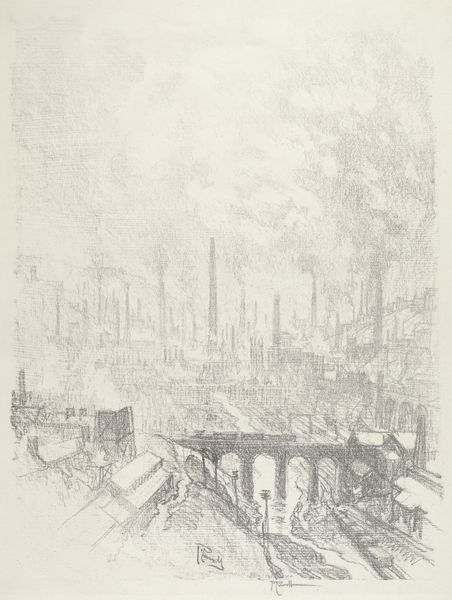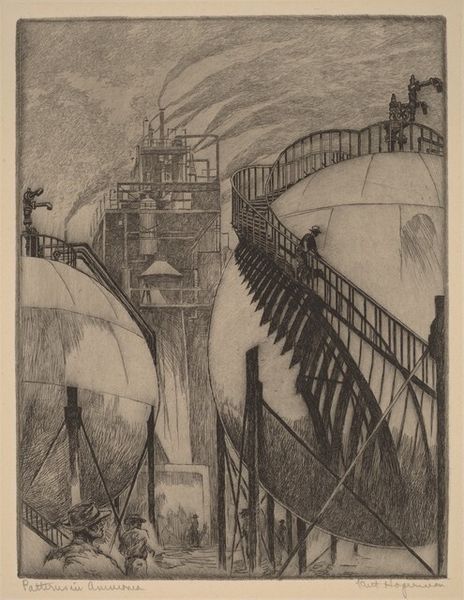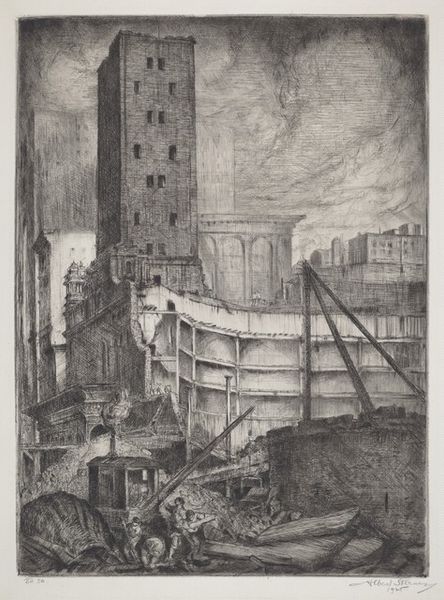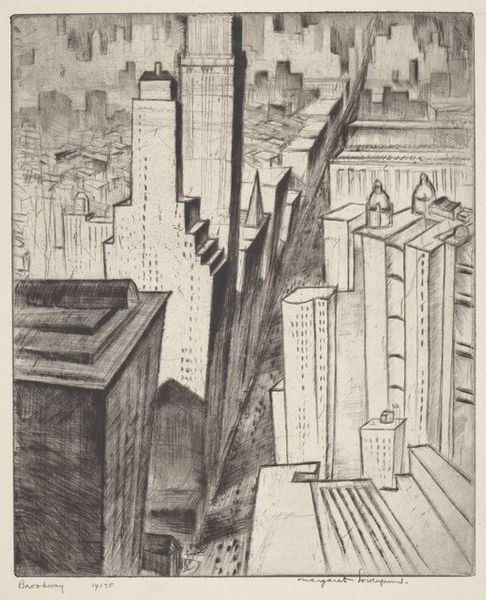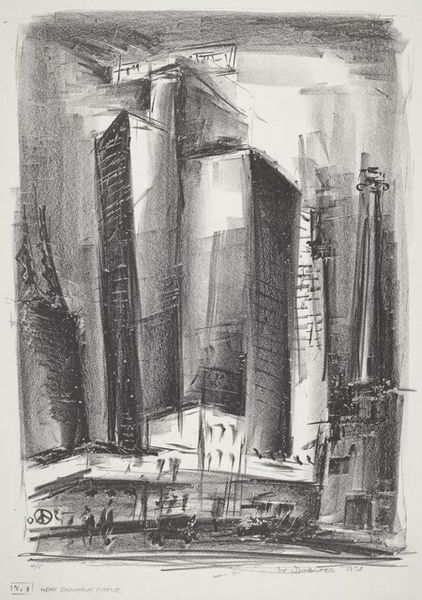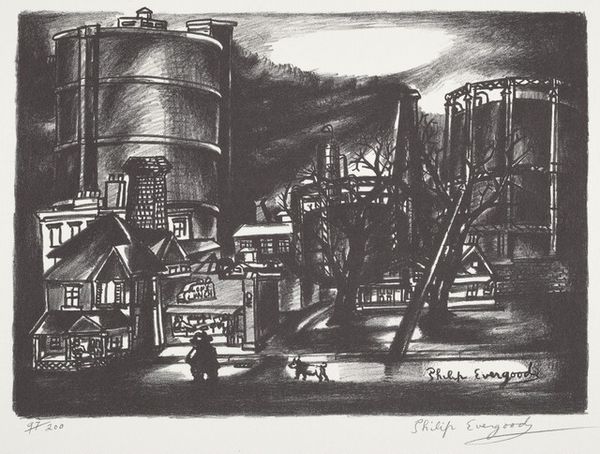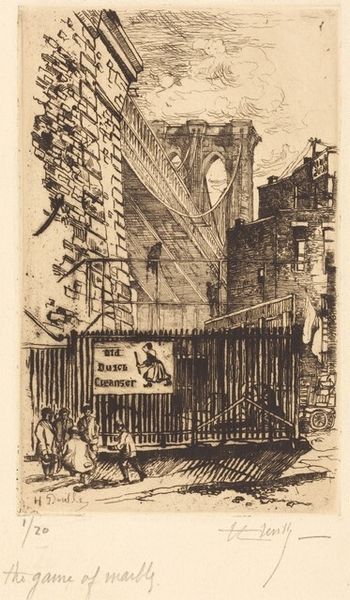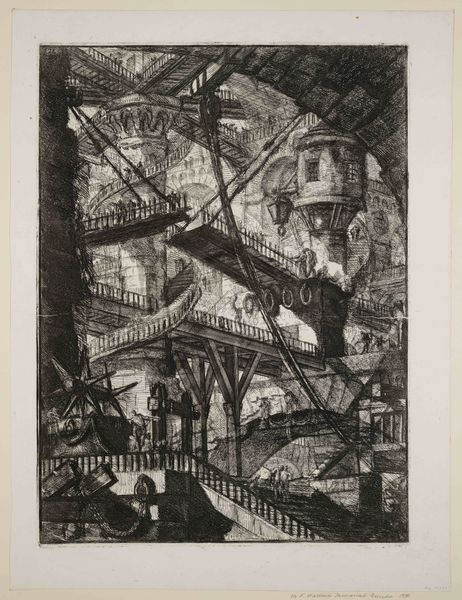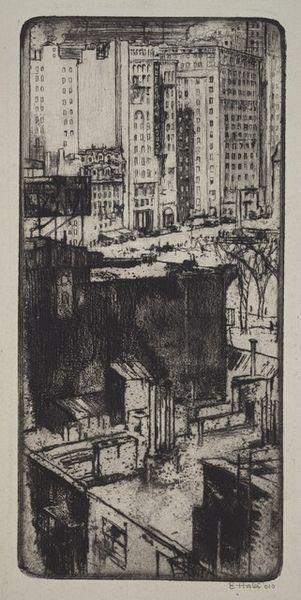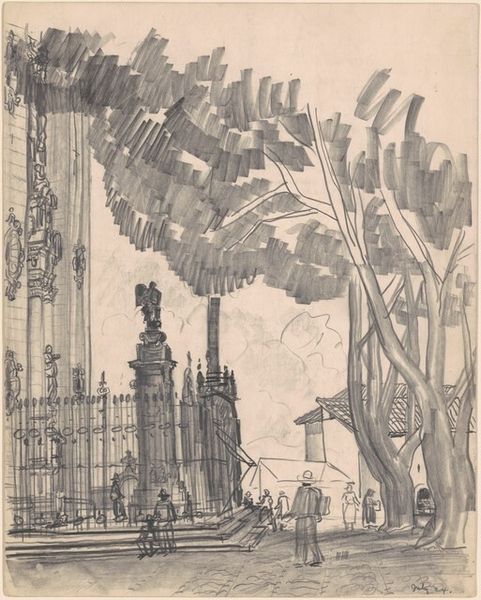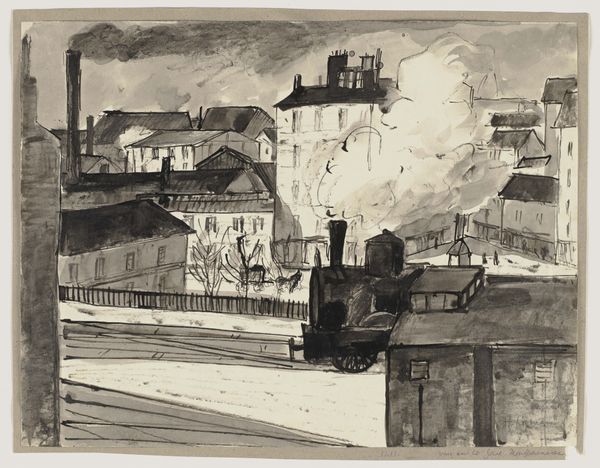
drawing, print, graphite
#
precisionism
#
drawing
# print
#
graphite
#
cityscape
#
modernism
Dimensions: plate:ca.378 x ca.318 mm image: 343 x 244 mm sheet: 405 x 296 mm
Copyright: National Gallery of Art: CC0 1.0
Editor: This graphite drawing from 1926, "Chicago Skyscrapers" by Anthony Angarola, strikes me with its grittiness. The towering buildings loom, but the sketch-like quality makes it feel less imposing, more...human-scaled, somehow. What are your initial thoughts looking at this work? Curator: For me, this piece really underscores the rapid industrialization and urbanization happening in America at that time. Look at how Angarola uses graphite, a material itself produced industrially, to capture the essence of these mass-produced, steel and concrete structures. The “precisionist” style reduces the skyscrapers to simplified geometric forms, emphasizing their role as products of capitalist ambition and technological advancement. How does the method influence your sense of the piece? Editor: I see what you mean. The sketchiness softens the blow, but you're right, that just puts the means of production in high relief. So you're seeing this as a reflection of material culture in the 1920s? The choice of medium influencing how he portrays that culture and rapid material change? Curator: Absolutely. Think about the labor involved in constructing these behemoths, the materials sourced and transported, and the sheer consumption of resources. The drawing hints at all of this, right? Editor: Right. And that makes the whole 'cityscape' theme less romantic and more... a record of resource consumption. Curator: Exactly! Instead of solely admiring the aesthetic, we consider the conditions and methods through which that art object was realized. It makes you ponder how this period in history shaped our modern ideas. Editor: This materialist reading makes me think about our contemporary consumption of materials, which is a pretty stark comparison to what was happening during the industrial boom of the '20s. Food for thought, for sure. Thanks! Curator: My pleasure! Hopefully we can look beyond the finished drawing to see that its significance really does hinge on this understanding of social and historical context.
Comments
No comments
Be the first to comment and join the conversation on the ultimate creative platform.
